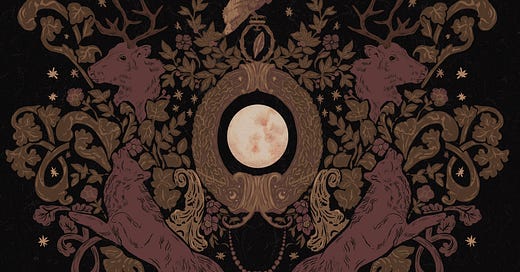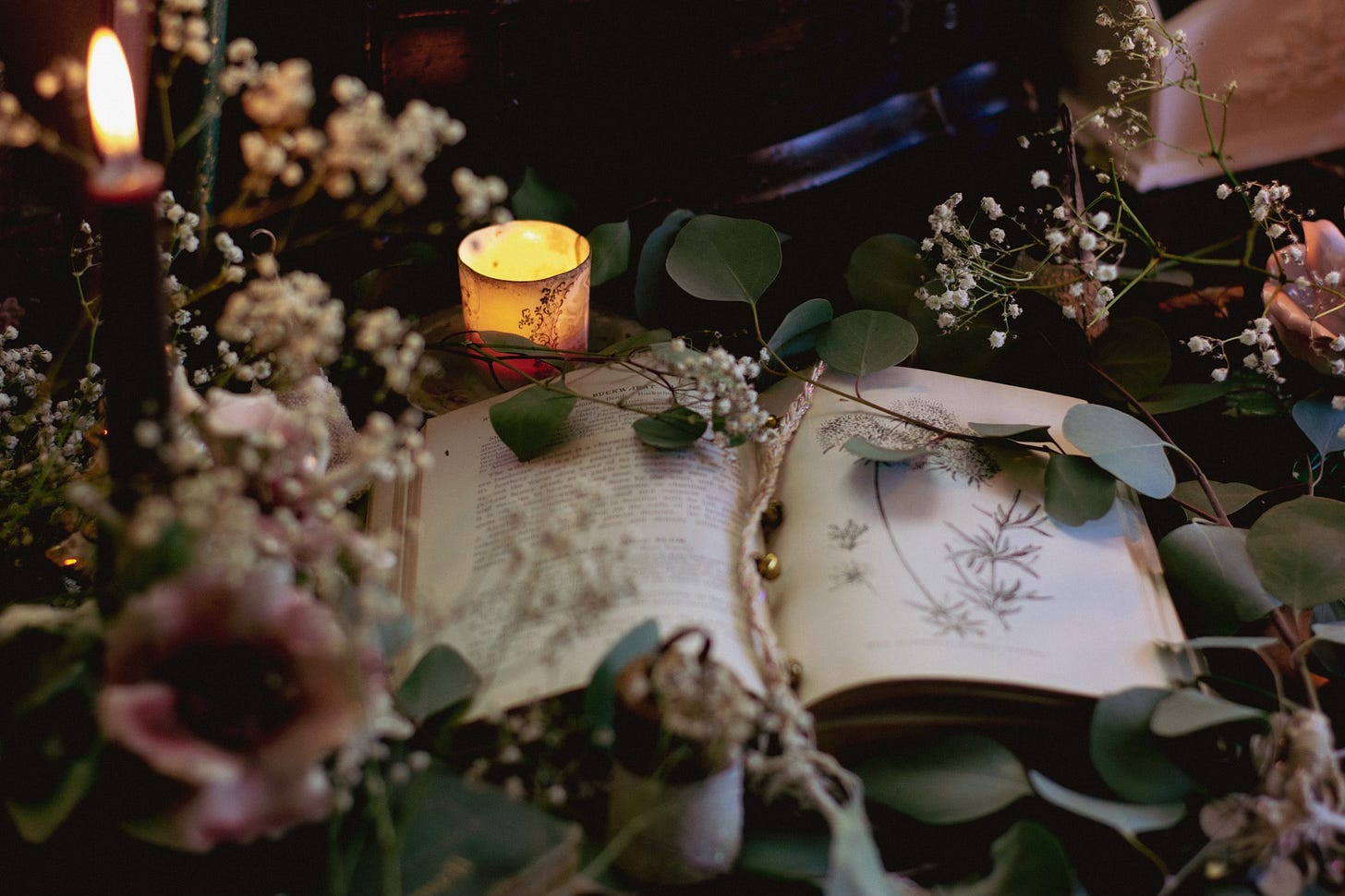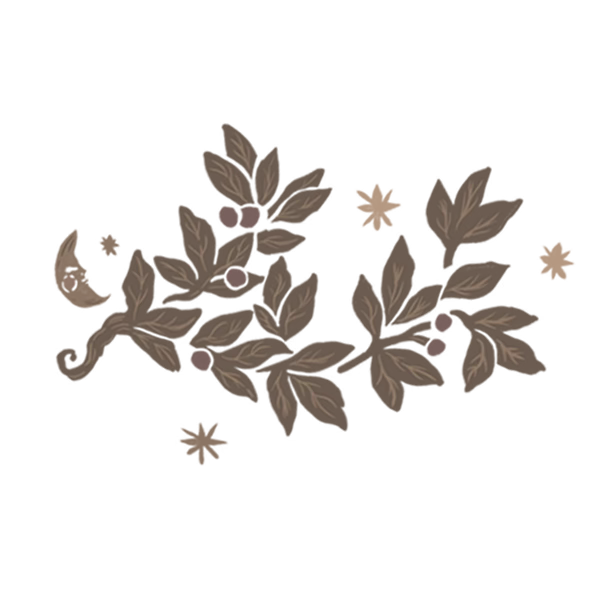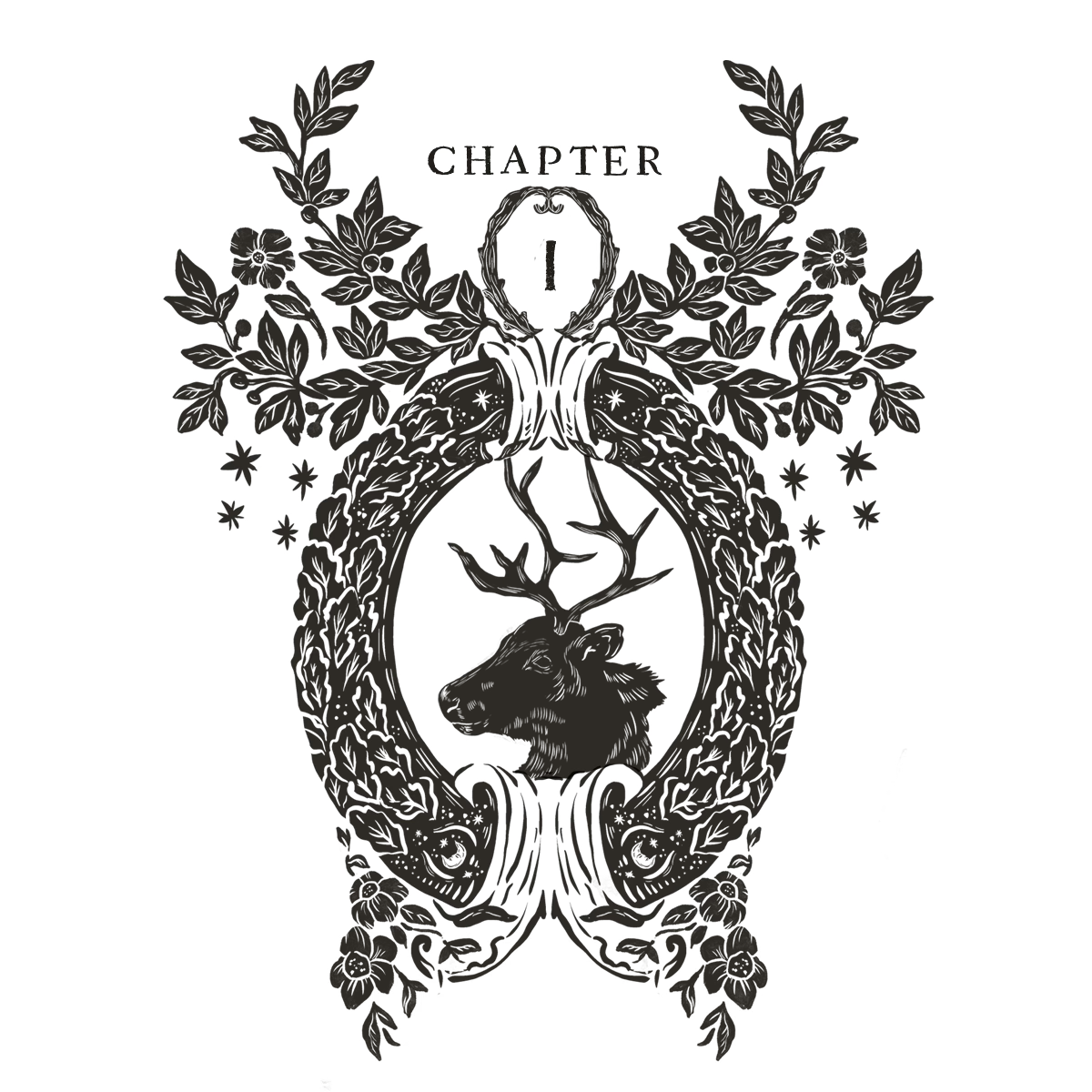Our first full moon of 2025 is a spell. It’s a spell that doesn't require fancy tools or heaps of practice, nor do we need to follow strict rules or memorize unfamiliar scripts.
January's moon is a spell that summons magic from our dreams. So, while it's often called the Old Moon, the Quiet Moon, the Moon After Yule, or the Wolf Moon, we've crowned it the Dreamer's Moon.
January's moon is a cosmic seed. It's a vehicle for our imaginations, the soul, for our inner Underworld travelers – the same ones who navigate the fierce winter wilds.
Seasons can be tangible, earthly thresholds, but also symbolic. Malleable and fluid, our seasons may not align with what the calendar says or what our neighbors are doing. Seasons can be cerebral and surprising, creating paths that spiral and split.
January’s moon is not a destination, but a doorway. It’s a spell built from yesterday’s lessons and intuitive scaffolding, and it hinges on a question – what do we want?
In Writing Down the Bones, Natalie Goldberg tells us to trust in what we love and continue to do it; only then will it take us where we need to go.
So, if we feel called to rest right now, let's rest. Although the calendar says it’s a new year, new you, come January, we’re still journeying through the winter wilds. Many of us prefer to wait until the quickening of Imbolc to break free from our seasonal cocoons.
On the other hand, if you're itching to buy a new planner and map goals for spring, summer, and beyond, do exactly that. Capricorn season belongs to the sea goat, a natural climber who can't help how the mysteries growing atop the tallest, twisted mountains compare to those in our deepest, darkest seas.
And, if you want to do both, more, and all the things - remind yourself that Mother Moon also dances between cycles of expansion and retraction, watchfulness and reflection, merrymaking and musing. But during the dark months, our lunar compass often stills. In a capitalistic society where stillness is a curse, people speak about their desire for rest in hushed tones, as if slowing down a sign of weakness.
But if we never rested, would we ever dream?
And if we never dreamed, would fairy tales exist?
Even if we don't remember our dreams, each night when we fall asleep, we explore distant, whimsical worlds without leaving our beds. This is where some mythologists believe the first fairy tales originated – in Dreamland. To them, Dreamland was an astral meeting place and explained how similar stories showed up throughout far-flung civilizations. Dreamland was an Otherworld. It was a place of interconnectedness, a collective unconscious. No longer hindered by distance or time, in Dreamland, people gathered and exchanged stories – the first fairy tales.
The most famous opening line of any fairy tale is “Once upon a time,” a reference to the ‘timeless eternity’ of dreams, existing both now and never.
Inspired by this possibility, this month, join us as we venture into Dreamworld alongside the creatures of the wildwood. Together, we'll gather symbols and secrets and scatter them throughout the waking world. Beneath the first full moon of the year, we’ll plant our dreamscapes in nature, within our hearts, and across the page. We’ll build feathered bridges between the world of dreams and the world of story.
The following passages are creative prompts. If you're a writer, consider them writing warm-ups or channeled writing exercises. For each prompt, set a timer for 10 minutes and keep your pen moving. If you're a painter or collage-maker, ritualize these prompts with intuitive artmaking. Use them as guided meditations, cast them as dream spells, or include them in your craft or creative practice however you see fit.
Chapter 1: The Deer
Imagine: Once upon a woodland winter, you spot a trail of crescent moons in the snow. A fellow traveler, no doubt. You don your antlers, strap on your bow, and follow them into the forest. The trees are thick, but you press forward, skirting the brambles and ice. To your delight, the moons multiply and take you deeper into the woods.
As a child of the wild, a huntress, you know every creature that haunts the wildwood, and you think – perhaps I'll stumble upon a den! The forest holds its breath as you slip an arrow from your sheath. You notice your hands are silver, but you have no time to wonder what that might mean before instinct carries you into a clearing, soundless as your prey. You lock eyes with a creature, a beast that is horned, hooved, and leaves moon-shaped tracks.
The animal is in your crosshairs, but for reasons unknown, you lower your bow, toss your arrows aside, and bend down to grab a handful of tiny crescents from the snow. You link them together, dangling one from the edge of the other.
The deer watches but says nothing as you craft a ladder to the moon. The deer is silent, but you remember.
Led by the deer, what do you remember?
“The wild does not have words. The unwritten pages spread themselves out in all directions! I come across the marks of roe-deer’s hooves in the snow. Language, but no words.” - Tomas Tranströmer
Keep reading with a 7-day free trial
Subscribe to Literary Coven to keep reading this post and get 7 days of free access to the full post archives.








